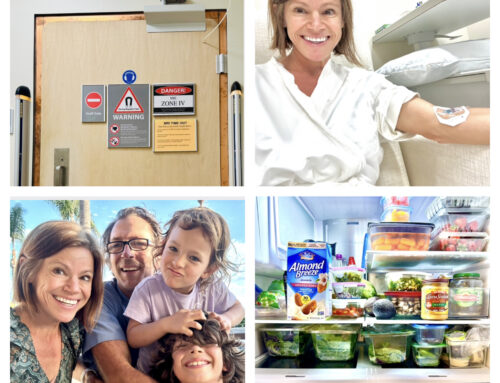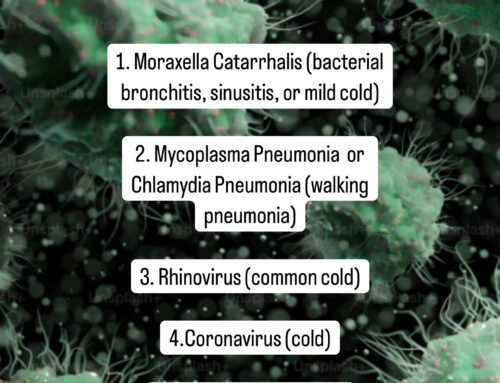[ad_1]
Viral illnesses that cause the common cold often cause gastrointestinal irritation (aka stomach flu). These illnesses spread quickly. Nonetheless in the height of any outbreak I often see patients for what is more likely to be food poisoning. CDC estimates that 1 in 6 Americans get sick from eating contaminated food every year. Here I explain what food poisoning is and how to prevent it.
When meat, cheese, fish and milk spoil they start to smell because of bacteria such as Pseudomonas. Although eating spoiled food is a bad idea these bacteria will not likely cause gastrointestinal symptoms.
Alternatively Salmonella, Campylobacter, Staphylococcus aureus, E. coli and Listeria– which come from animal feces and soil, cause food poisoning. They will not change the appearance, smell or taste of food. These bacteria flourish in a zone between 40 – 140 degrees Fahrenheit – with a doubling time of 20 minutes. A well-washed piece of melon with 100 bacteria at noon can have over 26 million bacteria by 6 pm on the same day. Storing food below 40 degrees and keeping hot foods above 140 degrees Fahrenheit will slow this process considerably. It is also good to note the top foods linked to food poisoning.
• Chicken, Beef, Pork, and Turkey
• Fruits and Vegetables
• Raw Milk, Cheese, and Other Dairy Products
• Raw Eggs
• Seafood and Raw Shellfish
• Sprouts
• Raw Flour
What can you do?
There are four key steps to safely preparing food:
1) Wash your hands thoroughly before handling food. Use clean utensils and cutting boards
2) Use separate cutting boards for fresh produce and raw meat or poultry to reduce the risk of Salmonella
3) Cook food to the right temperature using a food thermometer
4) Chill perishable foods such as meats, eggs, cheese or yogurt with at least two cold sources, such as freezer packs, to keep harmful bacteria from multiplying rapidly. Frozen juice poppers can also be used as freezer packs and by lunchtime should be thawed and ready to drink.
An insulated lunchbox should be used for packing perishable foods. Insulated containers such as thermos flasks can also be used to store hot soups and stews. When packing a child’s lunch the night before, store the food in the refrigerator overnight, so it stays colder for longer.
Finally, teach children to wash their hands with soapy water for 20 seconds before eating. Or pack disposable wipes so they can easily clean their hands before and after eating.
Getting sick
Despite parents’ best efforts, food poisoning can occur. When it does, oral rehydration is the cornerstone of treatment. You can buy a rehydrating solution of sugar, salt and water from most pharmacists. Or make your own by adding half a level teaspoon of salt and six level teaspoons of sugar dissolved in one liter of clean drinking or boiled water.
A bland diet for a short period of time can be helpful in recovery.
Call your doctor if your child does not urinate 3 times in 24 hours.
How to stop bugs growing in our food
Water is key, and denying it severely restricts microbial growth.That’s why salt has long been used as a preservative for perishable foods like meats; salt binds the water and makes it unavailable to microbes. Acid can also be used (via pickling or fermentation), as most microbes don’t like acidic conditions. Cooking kills the microbes of concern, but they can contaminate and grow in the food afterwards. Refrigeration is the most effective and economical option. Typically, the greater the moisture level, the more perishable the food. That’s why we can store dry foods (such as nuts) in the cupboard but high-moisture foods (such as fresh meat, vegetables) will quickly spoil if unrefrigerated.
To store food safely
The “danger zone” is the temperature range between 40°F and 140°F. If perishable food has been in the danger zone for:
• less than two hours, use it immediately or store in small portions (as these will cool sooner)
• two to four hours, use it immediately (do not store)
• longer than four hours, discard it




